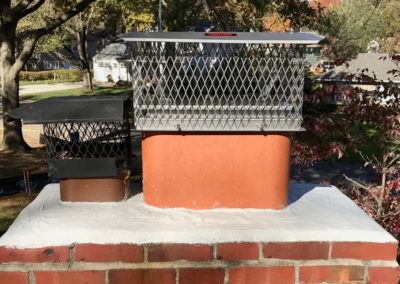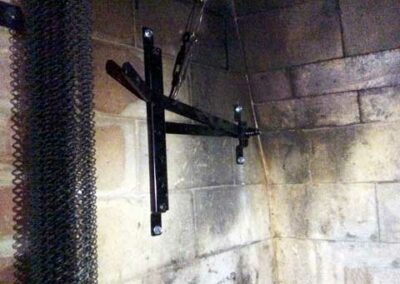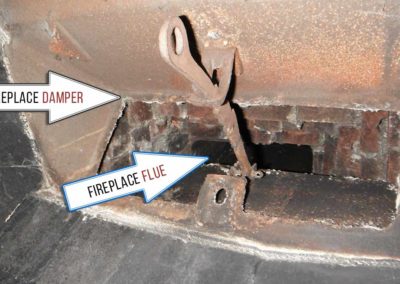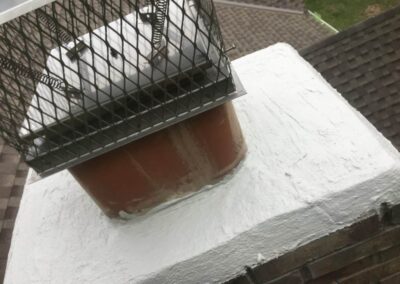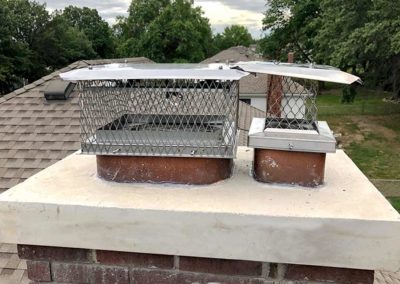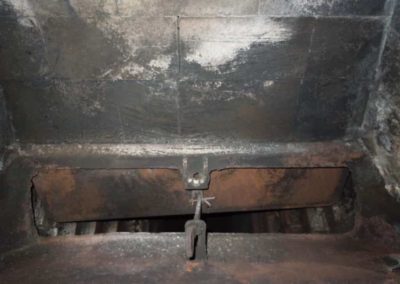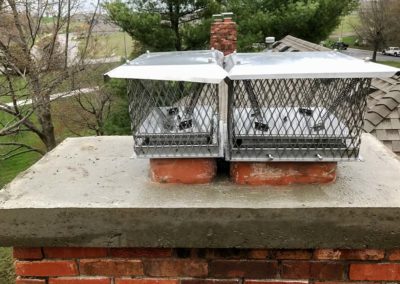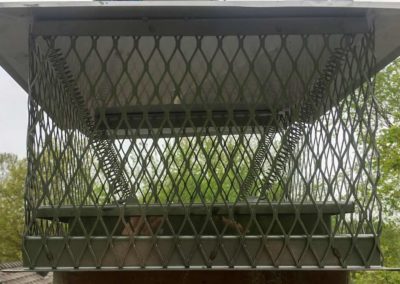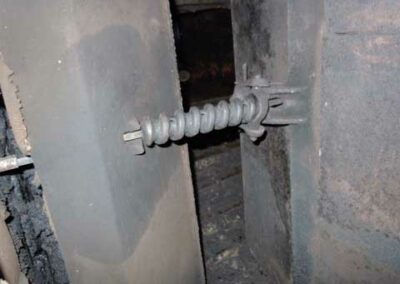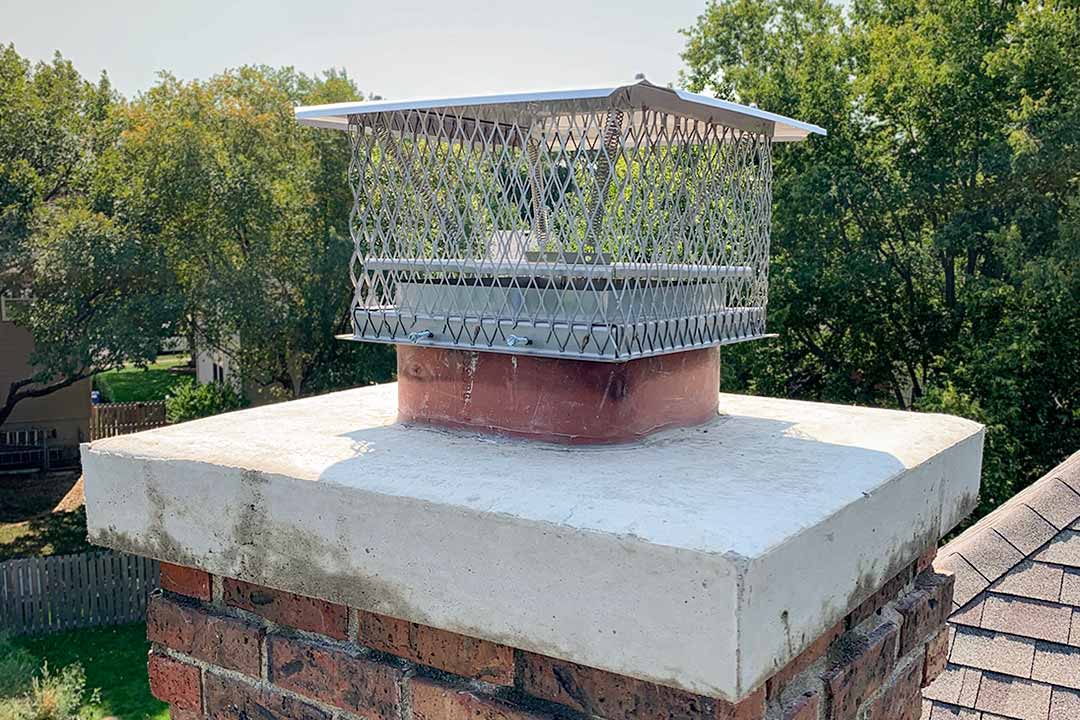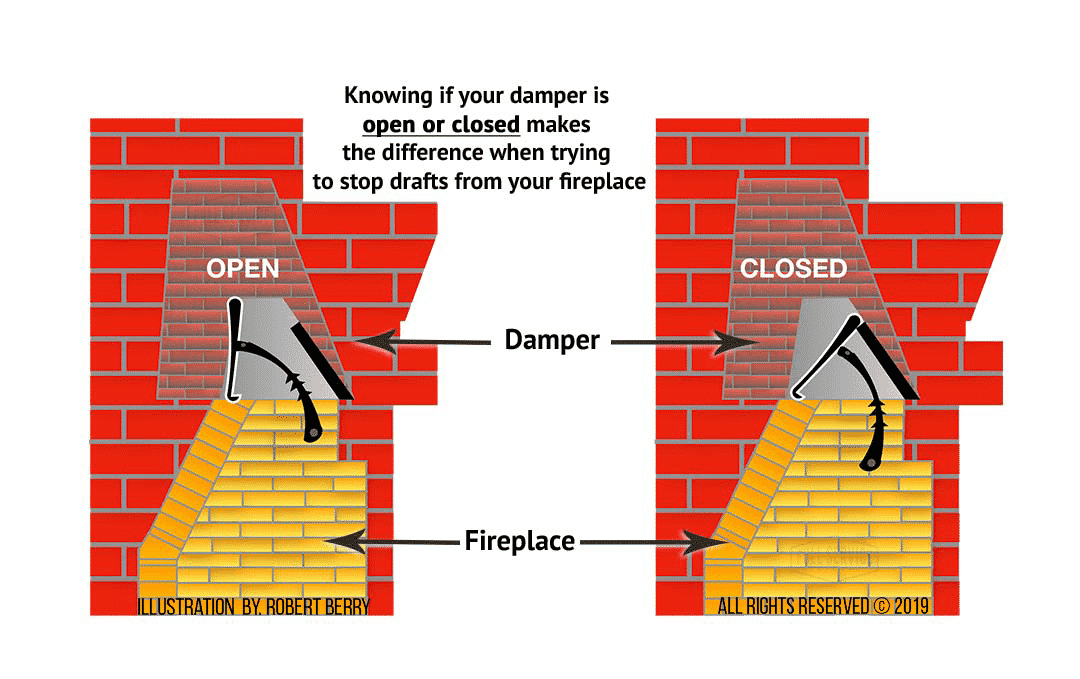Fireplace Damper Repair
Your Trusted Fireplace Damper Specialist Since 1987
Schedule an Appointment Today!
Common Fireplace Damper Problems
1. Flue Damper Off Track
Flue dampers can come out of their track causing homeowners difficulty in being able to open or close the flue. Throat damper design only works if the plate stays in open hinge slot.
2. Cold Air Fireplace Drafts
Many cold air fireplace complaints revolve around damper problems. They are also a common cause for higher heating costs.
3. The Damper was Incorrectly Operated
An incorrectly operated damper will sometimes jump out of its hinge resulting in a cold fireplace. Because fireplace repair often requires specialized tools, casual users are often unable to return the damper to its correct position.
4. Damper Doesn’t Close Completely
Another common issue to a fireplace damper is the inability to close air-tight, which is critical for consumers wanting an energy efficient home.
Since Vestal damper parts are located directly over the flame of the fireplace, “gasketing” the door to its frame isn’t practical. Consequently, the door and frame will warp from just a few fires. Which results in a very leaky fireplace damper, and air loss from the home.
5. Damper Fails to Open
If the damper for a wood stove fails to open when starting a fire in our firebox, getting our stove going will be difficult (not to mention a smokey mess). For this reason a yearly chimney sweep and inspection is necessary.
6. Broken Dampers Need Fixing or Replacement
Broken fireplace dampers may result in smoke being held indoors, cold air drafts coming in or warm air getting out. Due to the loss of homes indoor air broken dampers are a common cause for higher home heating/cooling costs.
Get your chimney problem sorted with the Chimney Detective Tool!
Trust Your Local Fireplace Experts
Full Service Chimney sweeps have repaired dampers in fireplaces across the Kansas City Metro for over three decades!
Allow us to help you solve your damper problems.
Throat Dampers vs. Chimney Flues
So when you want to use your fireplace and have a fire, the damper door needs to be open. Keeping the damper door open allows the smoke and fumes to leave your home and exhaust via the chimney flue to the outside.
When the fire is out and the coals are cool, the damper can be closed, this will stop household air (heating/cooling) from leaving a home through the fireplace and chimney.
How to Tell if a Damper is Open or Closed?
The only way to know if a damper is open or closed is to view it from inside the fireplace firebox. It is worth the trouble to poke your head in the fireplace and look up (of course, with no fire burning), because it is a “bad thing” to light a fire when we hope the damper is open, when it is really closed.
Different Types
Fireplace throat dampers (frequent among masonry chimneys) are commonly made of cast iron due to its high temperatures tolerance.
Vestal is one of the types of fireplace dampers most commonly used in our local Kansas City area. These are the (fishbone) “poker” types of chimney damper handle (the control). The most common problem encountered by homeowners of flue dampers is difficulties arising from coming out of their track. The fireplace throat dampers design only works if the plate stays in its open hinge slot. It does this only with gravity to keep it there.
If the damper is operated incorrectly, it will jump out of its hinge, often resulting in a cold fireplace. Once this happens, the casual user is often poorly equipped to return it to the correct position and may require assistance from a chimney professional.
Click the button below to get additional information about all types of chimney and fireplace dampers:
Do All Fireplaces Have a Damper?
Both prefabricated fireplaces and masonry chimneys have flue damper systems. Prefabricated chimneys and fireplaces have a built-in rotary damper plate, not unlike a choke mechanism on a lawnmower gas engine. With the exception of gas fireplaces, most fireplace chimneys have a functioning chimney damper.
What Does a Damper Do in a Wood Stove?
Flue dampers for wood-burning stoves are necessary for the air controls to limit the intensity of burning. Faulty flue dampers for wood-burning stoves can be a safety hazard. If too much air is allowed to the firebox, an unsafe temperature could result.
Also if the damper for a wood stove fails to open when starting a fire in our firebox, getting our stove going will be difficult (not to mention a smokey mess). For this reason, a yearly chimney sweep and inspection are necessary (another reason is dangerous creosote build-up).
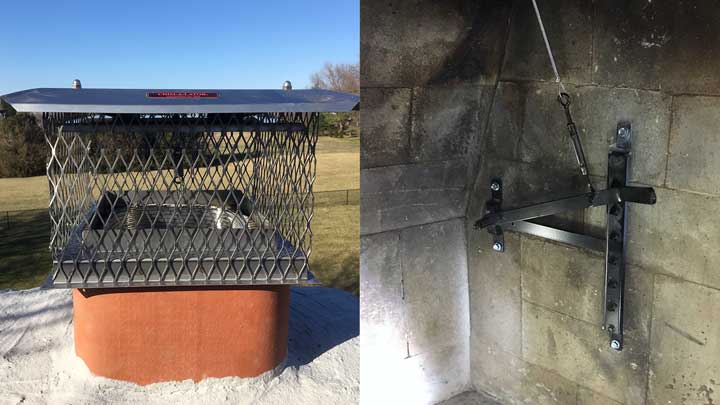
Keeping your home and hearth safe, warm and dry isn’t rocket science… It’s chimney science!
Top Dampers are a Great Choice
Chimney Damper Caps have even more advantages over fireplace throat dampers. The distance from the fireplace grate allows gasketing material between the door and the frame without the risk of being destroyed by the intense flames. A fireplace/chimney with a top-sealing chimney damper installed will often be warmer, making it easier to start fires and limits cold air fireplace problems.
Another benefit to the chimney top dampers is the ease of the damper handle to operate. The damper parts that open and close, are on the side of the fireplace firebox. So you can tell if your damper is open or closed without sticking your head in the fireplace. Call 913-642-6171 today for assistance.
What Our Customers Say
"Great company! Knowledgeable, courteous and they clean up well. I was very impressed with the demeanor of everyone I spoke to on the phone, or at my house. They definitely know what they’re doing. I highly recommend using this company for cleaning or repairs to your fireplace or chimney."
"All around excellent service I have nothing bad to say about this company."
"Great service, and detailed explanation of any issues and proposed solutions"
Your Kansas City Fireplace Damper Repair Professionals
Full Service Chimney sweeps have repaired and replaced tens of thousands of fireplaces and their dampers in the Kansas City area. We can help you too!

